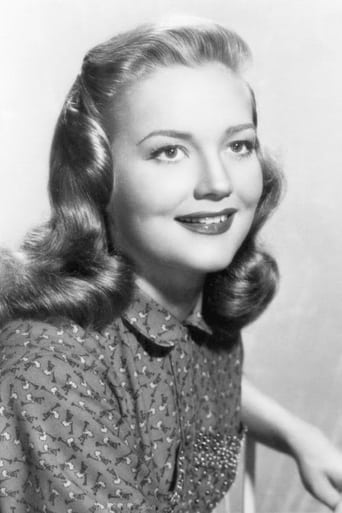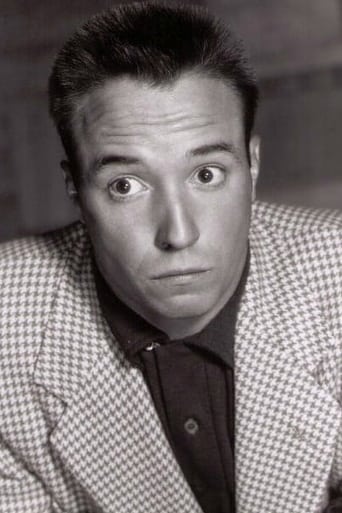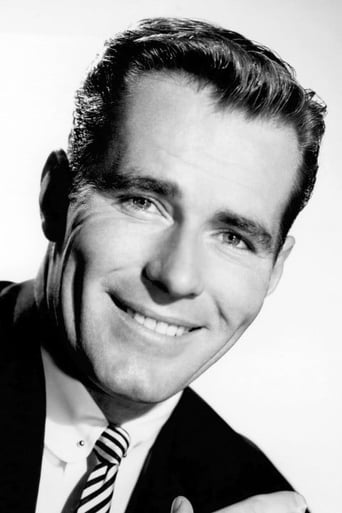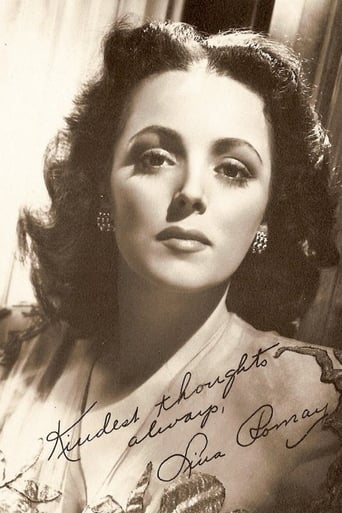Scanialara
You won't be disappointed!
Jeanskynebu
the audience applauded
Acensbart
Excellent but underrated film
BelSports
This is a coming of age storyline that you've seen in one form or another for decades. It takes a truly unique voice to make yet another one worth watching.
Brian Camp
THE MAN BEHIND THE GUN (listed as 1952 in Leonard Maltin's Movie Guide) is a Warner Bros. western starring Randolph Scott and set in Los Angeles, California in the early 1850s. The script is okay, the pace is fast and it has a large, colorful cast. There are a number of interesting elements in it that are worth noting. The Southern California setting enables the script to name-check landmarks in the area: San Pedro, Santa Monica and the LaBrea Tar Pits—which two characters visit at one point. (No sightings of woolly mammoths, though.) They even mention San Luis Obispo, which is further up the coast. The plot involves manipulation of the water supply to L.A. with a corrupt politician trying to take control of it. As such, it looks forward to Roman Polanski's CHINATOWN (1974), 22 years later. There's even a direct casting connection. The actor who plays a California senator here, Roy Roberts, plays L.A.'s mayor in CHINATOWN.There are two significant Latino characters. One is female nightclub owner Chona Degnon, played by singer Lina Romay. She's the film's resident femme fatale and she tries to recruit Scott to help out with her gun-running sideline. She sings a couple of numbers, too. Some of you may remember her from her delightful live-action cameo in Tex Avery's cartoon, "Señor Droopy" (1950). The other Latino character is famed California bandit and folk hero Joaquin Murietta, well played by Robert Cabal, an actor I'm otherwise unfamiliar with. Other movies have been made about Murietta, including the TV movie, "Desperate Mission" (1971), starring Ricardo Montalban. Murietta is seen here on the cusp of his outlaw career and he becomes an ally of the hero. He's quite handy with both guns and knives and kills seven opponents, often quite casually.The cast includes Patrice Wymore (looking quite beautiful) as the fiancée of a military officer (Philip Carey) assigned to work with Scott. She soon finds herself falling for Scott, an undercover officer sent by Washington to put down a planned secessionist revolt. Wymore and Romay have a pretty convincing catfight at one point. Dick Wesson and Alan Hale Jr. (taking up where his dad, a longtime Warners contract player, left off) play ex-soldiers who'd served with Scott in the Mexican War and who act as his reluctant sidekicks here. They provide much of the (forced) comic relief. Dependable heavy Morris Ankrum has too small a part as a die-hard secessionist. Other dependable heavies in the cast include Douglas Fowley and Anthony Caruso.It's all mostly shot on studio sets, with location work saved for the action finale—a spectacular raid on the water pirates' camp. In a few sequences, the film uses stock footage culled from an earlier Warner Technicolor western. IMDb says it was SAN ANTONIO (1945). I'm more inclined to say it was DODGE CITY (1939)—and it's quite possible that the footage used in SAN ANTONIO was indeed taken from DODGE CITY as well. If anyone wants to watch all three of these films back-to-back just to get this straight, be my guest.This isn't the best Randolph Scott western I've ever seen, but it's certainly above average for him.
Tim Kidner
Seemingly, for a good part studio-bound, this bright little western is OK, as they go. It has good colour, a couple of breezy leads, some obviously staged fights and a story that seemed as vague as everybody in the film was about Randolph Scott's identity.How anybody could quite think that a tall, lean, cowboy-looking cowboy with a ten gallon hat to boot, would ever pass off as a 'schoolteacher', I don't know! In all westerns I've ever seen, schoolteachers have been pretty, demure little damsels that are just arriving by stagecoach or have been in post for years and inevitably marries the sheriff. That's a given...
justincward
The explosion of TV channels must be eternally grateful to the Randolph Scott Western production line, because any any moment there must be one of what seems like a hundred Randolph Scott movies playing on at least one no-budget station."Man Behind The Gun" is a typical early 1950's period melodrama with pre-WWII production values that relies on a historically-topical murder mystery plot peppered with action scenes to disguise the script's complete absence of character development, and thus lack of suspense. In years to come the role of these films would be taken over by TV shows like 'Gunsmoke', 'Bonanza', etc - and these actually did the job better. Randolph Scott, looking particularly grizzled in this, is the good guy, struggling against the bad guys against whom he will eventually prevail. There's no more interest in what he goes through emotionally than in what his horse is feeling, unless you count wondering whether he'll sort out the initial misunderstanding with the female lead by the end. The music is a stronger indication of the emotional state of the 'characters' than the acting is. But it's fine if that floats your boat; and I wouldn't berate you for enjoying 'Diagnosis, Murder', either.Workmanlike, pedestrian, and ageing rapidly. 3 stars for being competently put together; 0 for artistic endeavour.
weezeralfalfa
In contrast to most reviewers, I found this one of the most interesting Randolph Scott westerns I have seen. However, it could have used a better descriptive title. For a start, "The man behind the masquerade" would apply to several of the main characters, including Randy.The plot centers around two things: the secret effort of the US army to infiltrate and break up a pre-Civil War secession movement in southern CA, and the shiftings in the romantic quadrangle between Randy, as Major Callicut, Captain Giles(Phillip Carey), Lora(Patrice Wymore) and Chona(Lina Romay). The two female leads are cast as opposites in personality as well as looks. Chona is a worldly Mexican spitfire singer in an L.A. nightspot, whereas Lora is a straight-laced rosy-cheeked striking blond school teacher from the East. Randy is clearly smitten by both, as is Captain Giles, who will unexpectedly be working with Randy to squash the secession movement. Lora is engaged to Giles, but she soon cools toward him, while warming up to Randy, whom she met on the stage to L.A. Meanwhile, Giles has been dallying with Chona, in Lora's absence. Now, Chona is angry that Giles has stopped seeing her, after Lora's arrival. She briefly hints at a romance with Randy, but this fades after he discovers that she is in with the rebels and she discovers that he is a secret agent for the army. Chona eventually initiates a spirited but remarkably inept cat fight with Lora over Giles. It ends in a draw, but tragedy soon strikes one.Meanwhile, Creegan, a vocal supporter of an independent southern CA, as a slave state, is at odds with Senator Sheldon, supposedly a staunch supporter of a united free CA. However, Sheldon also has plans for an independent southern CA, with himself as kingpin. But first, he wants to relieve Creegan of his monopoly of the water supply for L.A. It takes Randy a while to figure out that it is the supposedly deceased Sheldon, not Creegan, that he must subdue.Dick Wesson And Alan Hale Jr. are Randy's sidekicks, providing occasional comic relief. Wesson served other supporting roles during this period, usually as an effeminant daffy character.(examples: "Desert Song" and "Calamity Jane"). Here, he masquerades as a woman in one scene, but is laughingly unconvincing, with his moustache and unshaven face! He usually sports a bull whip which, among other things, he uses to remove the dress from the derriere of a saloon girl! Hale is easily confused with his father, who played similar supporting roles, especially in Errol Flynn movies. Patrice Wymore was the last official Mrs. Errol Flynn. She would interrupt her rather short Flynn-promoted film career to tend her ailing husband, whom she eventually divorced. Unfortunately, her daughter by Flynn turned out to have Flynn's addiction to drugs and died a beach bum cocaine and rum addict, reduced to stealing coconuts to support her habit. Lina Romay was primarily known as a Latin singer. She should not be confused with the younger actress of mostly horror and pornographic films, with the same name.In some respects, this film reminds me of the earlier Wayne western "Tall in the Saddle". Again, Wayne simultaneously becomes tenuously involved with a raven wildcat and a cool blond from the East. Again, Wayne is initially misled as to who the real villain is he is looking for. This was a B&W film, in contrast to the Technicolor treatment the present film was given. Color films rapidly took over Hollywood in the '50s, largely because of increased competition from TV and reduced complexity of making color films. Color TVs didn't become common until the '60s. Thus, color served as another reason for people to go to theaters.





